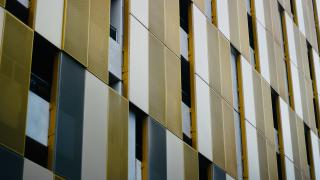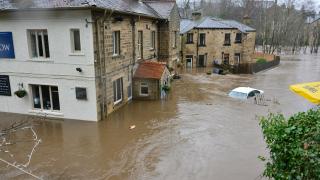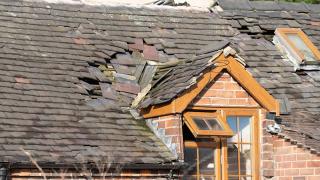In this fourth and final article on zero carbon in building developed by Nick Turner, Head of Surveying at Woodgate & Clark, we look at the wider issues associated with the environmental impact of construction and the challenge of ‘betterment’ in building repairs.
The broader carbon footprint of construction and repair
Embodied carbon is just one factor when considering carbon emissions associated with a material. There is the risk of toxic emission release, such as chloride, formaldehyde, toluene and ethylbenzene. Another major concern is microplastics leaching out from plastic-based materials into waterways, posing a serious threat to marine life.
We also must consider the carbon cost of extracting the raw material, processing it, transport to the place of manufacture, manufacturing the final product, transporting to site, installing the product, wastage on site and disposal when the building is demolished.
A material such as timber, appears to be an ideal material for construction. It has low embodied carbon, it is sustainable, economic and has many uses. However, diesel and petrol machinery is used to harvest and transport the raw material, gas is used to dry it and convert the logs to planks or sheets. It is then transported by road, rail or even sea, to be processed into the final product or sent to site. Here more energy is used to ensure the timber is suitable for its use, often creating a lot of waste.
Once incorporated into the building it acts as a carbon ‘sink’ until the building it is in, is demolished, at which point, if the timber is burnt, all the carbon is released.
It is therefore not a simple case of specifying low carbon materials because they may not be available, suitable for the application or the transport costs might simply outweigh the benefit of the material itself.
The construction industry has accepted a responsibility to reduce its carbon footprint and developments in materials, construction techniques, waste reduction, recycling and transport are continuing.
As discussed in our previous articles, there are some interesting innovations and low carbon materials are being developed as alternatives to traditional materials. The use of recycled materials is also increasing.
The industry will also have to look at reducing waste on site and at ‘clean fuels’ to power the machinery on site and used to transport materials.
Longer term view needed
As consumers of the construction product, the costs for all this may be higher than traditional materials and methods until they become the ‘norm’. Some of the materials can also be more economical to use in the whole life of the building, so as a building owner and user, the longer-term economics make sense.
Insurers may have a different view as they are not invested in the whole life cost of a building. They are paying for repairs to buildings owned by others following an insured event and will be focused on the repair cost.
The question therefore is what incentive there is for insurers to repair using low carbon alternative materials or techniques, when the cost of doing so is higher than repairing with traditional materials?
Adjusters have a duty to ensure that there is no ‘betterment’ when it comes to agreeing the repair specification. Any material that is of a higher standard/performs better could be considered betterment, especially if it costs more than the damaged material.
If, for example, gypsum plasterboard has been damaged, an adjuster could not agree to a repair schedule that specified a low carbon and more expensive alternative under current policy wordings.
That is, unless policies were to allow for such alternatives to be considered.
Any such wider view would need to be factored into the economics of the cost of Insurance and in respect of which debate we all have a contribution to make.





